A welcome email is one of the most important emails you’ll ever send subscribers. After all, it’s the email that makes or breaks their first impression of your brand. Get it right and you’ll have a highly engaged subscriber from the word “go”.
Countless studies show that welcome emails drive higher open and click rates than standard emails. Yet despite this, a recent industry benchmark report found that 51% of brands do not use a welcome email.
So let’s get one thing straight.
A welcome email is a must. Whether you’re a food blogger, a nonprofit or an ecommerce brand – every business and entrepreneur should be welcoming new subscribers with an automated email.
And in this article we’re going to take a quick look at why and dive deeper into how to write a great welcome email.
Page Contents
5 reasons why you should send new subscribers a welcome email
When a website visitor signs up to your mailing list, they are telling you that they’re interested in your product or service. They’re also telling you that they want to hear from you.
If you’re not emailing them at this precise moment in time, then you’re wasting a golden opportunity. And these five incredible stats should help put that in perspective:
- Open rates for welcome emails are up to 86% higher than standard emails (Source: Vero)
- Welcome emails generate 5x the click-through rate of a standard email marketing campaign (Source: InboxArmy)
- Welcome emails with an offer can boost revenue by 30% per email, compared to welcome emails without offers (Source: Invespcro)
- 74% of consumers expect a welcome email as soon as they subscribe (Source: Wordstream)
- Subscribers who receive a welcome email show 33% more engagement with the brand (Source: InboxArmy)
As you can see, subscribers not only expect a welcome email – they’re also going to engage more with this email than any other.
Plus, welcome emails can also help improve your deliverability.
So now that you’re convinced you need one, let’s take a look at how to write a great welcome email.
The 10 elements of a great welcome email
1. Send it immediately
Step one in delivering a great welcome email is to make sure you send it to new subscribers as soon as they sign up to your mailing list.
Studies have shown that subscribers are most engaged with your brand within the first 48 hours of signing up. Yet it’s really a case of the sooner the better.
The graph below shows the percentage of subscribers who engage with welcome emails based on when they’re received.
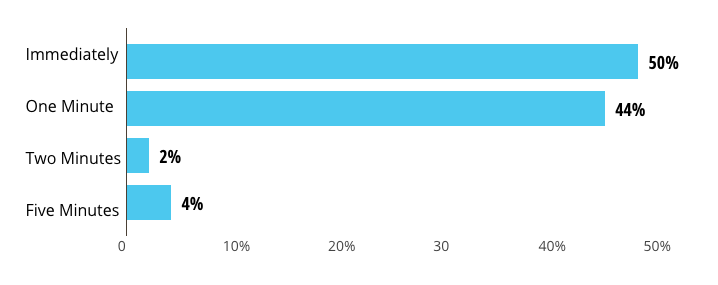
Clearly, the sooner a new subscriber receives a welcome email, the more likely they are to open it.
Thankfully, email marketing automation makes it easy to send a welcome email to subscribers the instant they sign up to your mailing list. So take advantage of these features and start building a relationship with new subscribers straight away.
2. Write an enticing subject line
A good subject line is crucial to getting your welcome email opened. It should be enticing yet concise.
You can try inspiring curiosity by asking a question. Or use an emoji for fun and to make your subject line stand out in a crowded inbox. Or stick to a simple yet effective welcome message. Some reliable options include:
- Welcome to the club!
- Thanks for joining
- Nice to meet you
If you’re going to include a welcome discount or an exclusive gift, mention this in the subject line. That’ll spark interest in what’s inside your email. And increase your open rates.
And when it comes to a good subject line, keep it short and sweet. Aim for no more than 10 words as the longer the subject line, the lower the open rate.
Back in 2014 Retention Science analysed 260 millions emails and found those with subject lines just 6 to 10 words in length generated higher open rates.
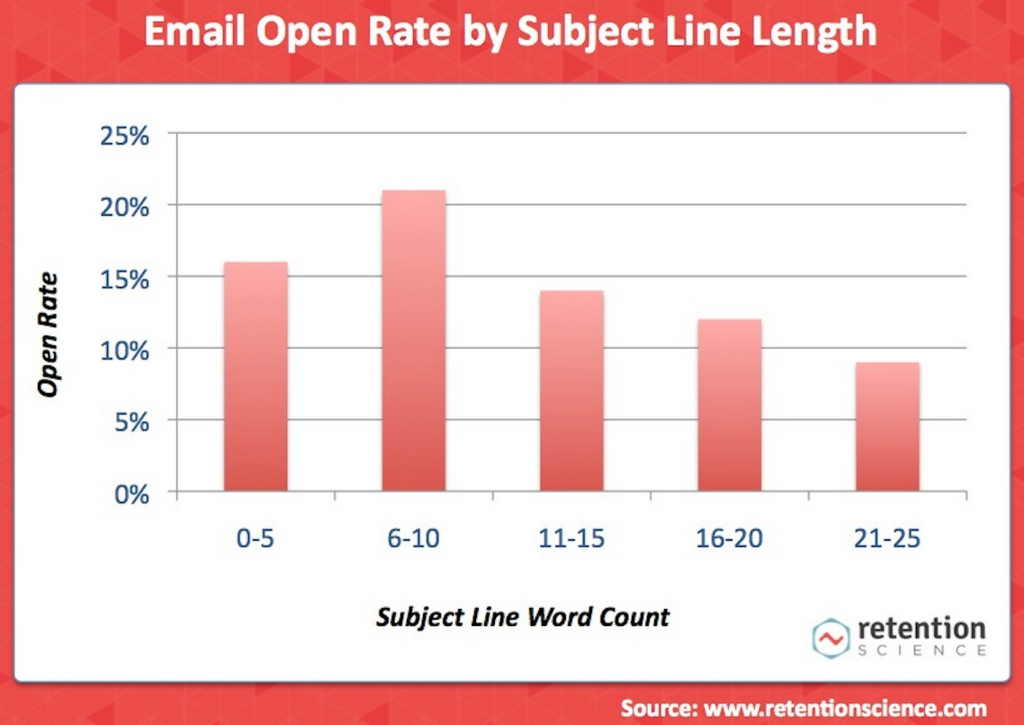
3. Make it personal
Collecting names at time of sign up and greeting new subscribers by name is an easy way to add personalisation to your welcome email.
You can either address subscribers in the subject line. Or start your email with a cheery “Hi [name]” or “Welcome [name]”.
Research by Experian found that using a personalised subject line delivered 26% higher open rates on average across all industries.
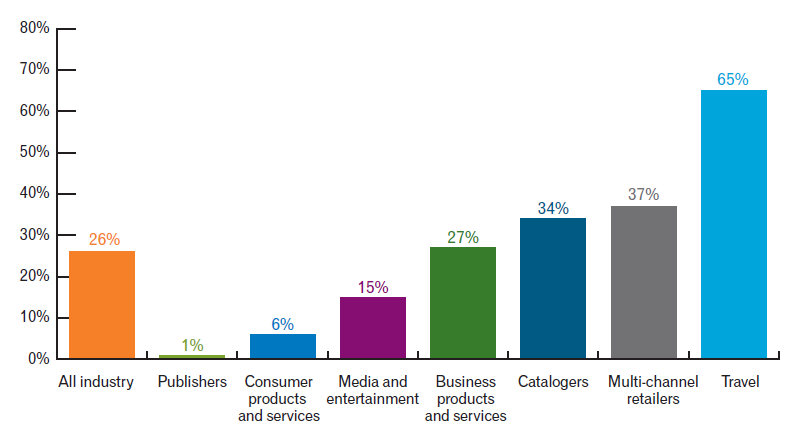
But that’s not the only way to make your welcome email more personal.
Think about the ‘from’ name too. Use your brand name so that it’s instantly recognisable to new subscribers. Or try using a real person’s name in the sender’s address so that it seems more human.
And avoid using noreply@yourbrand.com type emails – this will make your email seem robotic and unfriendly.

4. Say thank you
Start showing your subscribers you appreciate them the moment they join your mailing list. And thank them!
After all, that subscriber began their journey as a website visitor and took the time to sign up for your newsletter. They’ve also made a clear expression that they’re interested in what your business offers.
So take a moment to say thanks.
It could be a simple line of text or a more creative image or GIF. However you do it, thanking new subscribers helps build a positive relationship with your brand and adds a human quality to your email.
Here’s a good example from Blinkist:
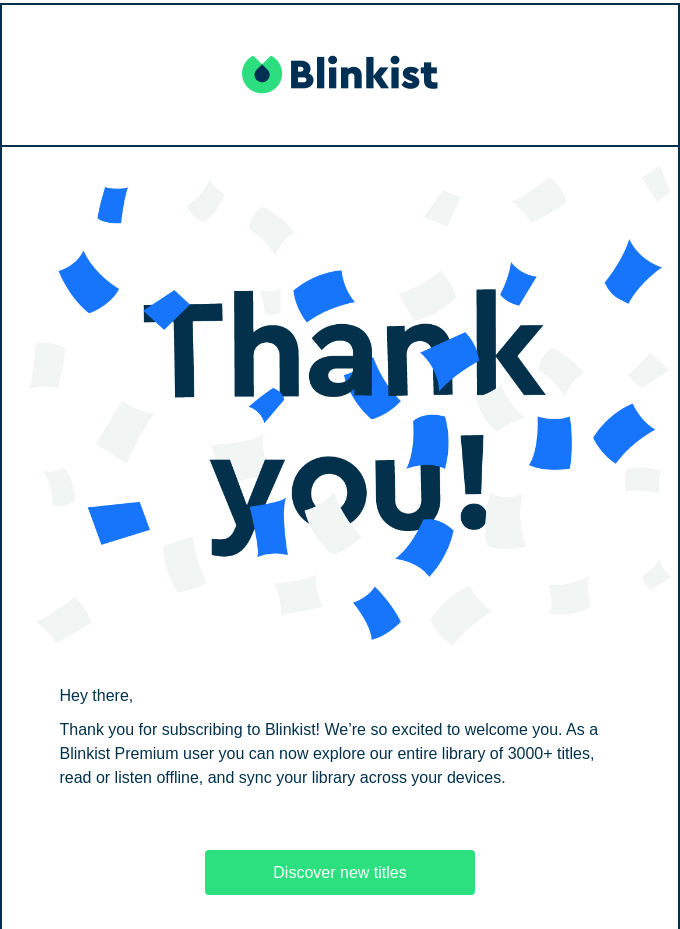
The big “thank you!” is one of the first things readers will see. And the ‘thank you’ message continues in the intro paragraph. It’s a great way to make new subscribers feel valued.
5. Explain the benefits
Now that you’ve got their attention, take a moment to remind new subscribers why they signed up. And tell them what they gain from being on your mailing list.
Focus on what matters to your audience. Whether that’s the quality of content you’ll be delivering to their inbox. Or the exclusive discounts they’ll be receiving as a subscriber.
Answer the question in every potential customer’s mind – “what’s in it for me?”
Do that and you’ll create a more positive image of your brand and encourage your subscribers to look forward to your future emails.
Here’s how The New Yorker does it:
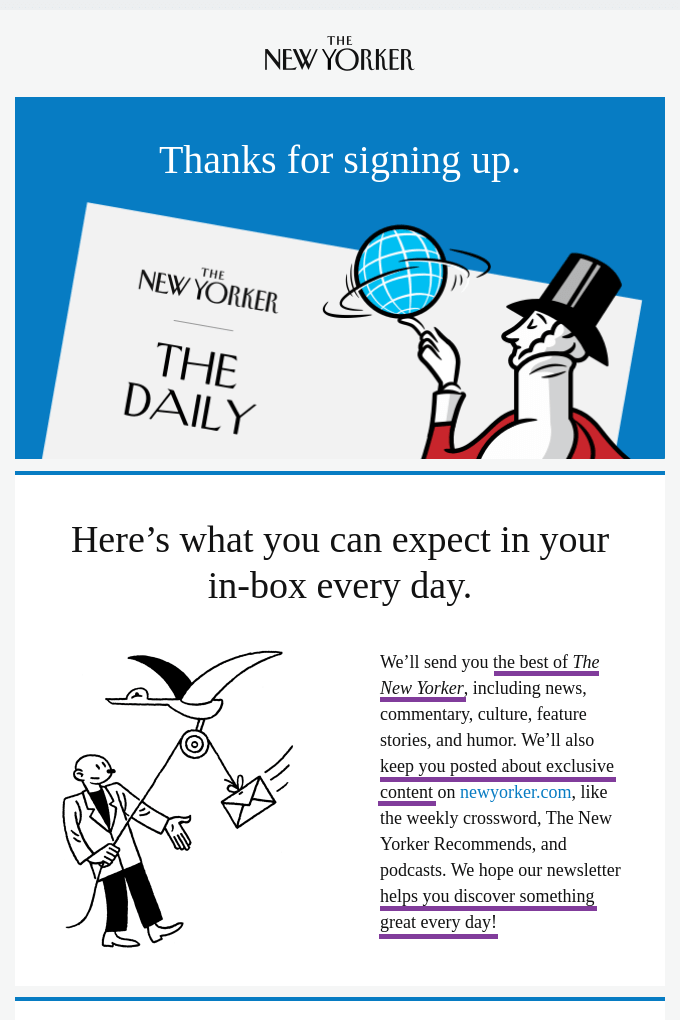
In the intro paragraph of their welcome email, they highlight three benefits of their newsletter to subscribers:
- The best of The New Yorker, direct to your inbox
- Access to exclusive content
- Something great every day!
Highlighting what a subscriber gains from receiving your newsletter helps validate the their decision to sign up in the first place. Which makes for a happier subscriber.
6. Tell your story
Now’s the perfect time to explain to subscribers what your brand is all about. Remember, they’ve already told you that they’re interested in your business by signing up. So grow that interest by telling them your story, sharing your company values and highlighting your brand personality.
Start building that connection with your audience by helping them get to know you. It’s a good investment in the future as the more familiar someone feels with your brand, the more likely they are to purchase from you further down the line.
But always bring your story back to the customer and how it’s relevant to them – ask yourself, why should they care about your business? What do your company values say about the people that buy from you?
Here’s a good example from Leaf Shave:
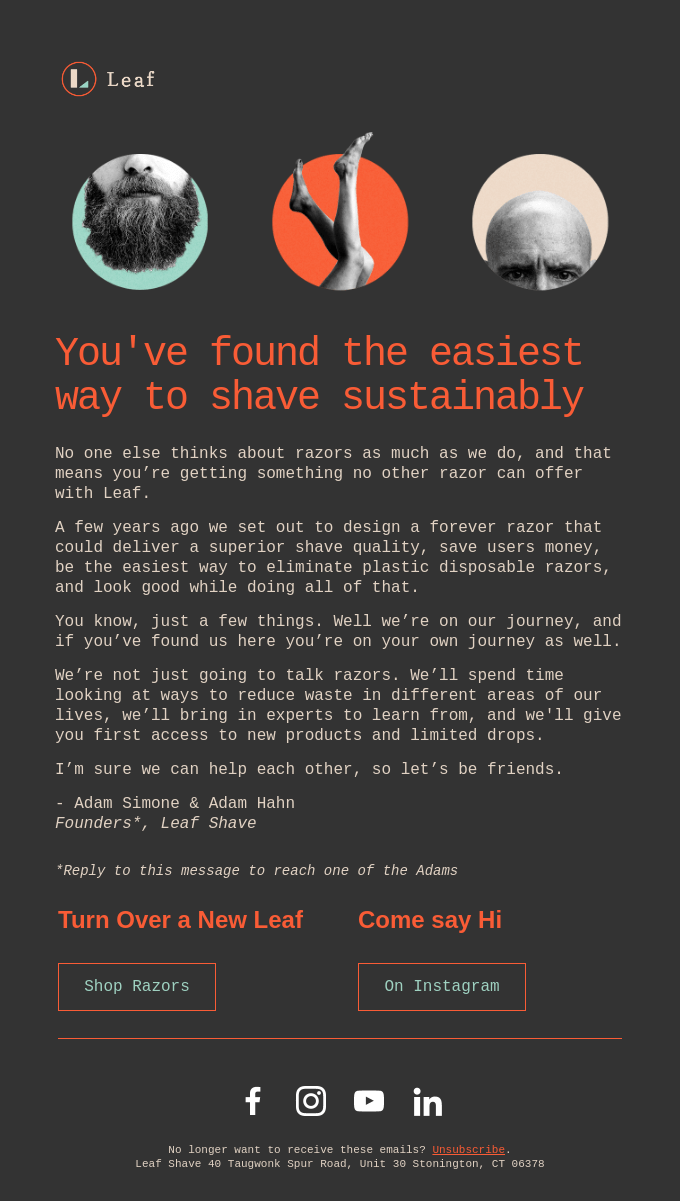
The email is all about why Leaf Shave exists. Yet they relate it back to the customer and their values. It’s implied that by purchasing a razor from them, you’re the type of person who wants superior quality, to save money, and to reduce plastic waste.
And they splash a bit of character throughout the email too. Starting with the fun images at the top. Ending with a quirky reference to the fact that the founders are both called Adam.
The impression is that there are actual humans behind this email. And other humans, like your subscribers, will find that far more engaging.
7. Provide free value
Nothing builds goodwill like a freebie. So give your new subscribers something that they’ll enjoy, for nothing.
That could be downloadable content or links to useful resources. It could be a free gift. Or an exclusive discount on their next purchase.
According to Invesp, welcome emails with an offer can boost revenue by 30% per email, compared to welcome emails without offers. And welcoming new subscribers with a special offer taps into the feeling of exclusivity, one of five proven marketing psychology hacks.
For your welcome email, think about what would delight your subscribers the most. And offer it to them.
Welcome discounts work particularly well for ecommerce brands. Here’s an example from sock and apparel brand Bombas who welcome new subscribers with a 20% discount code:
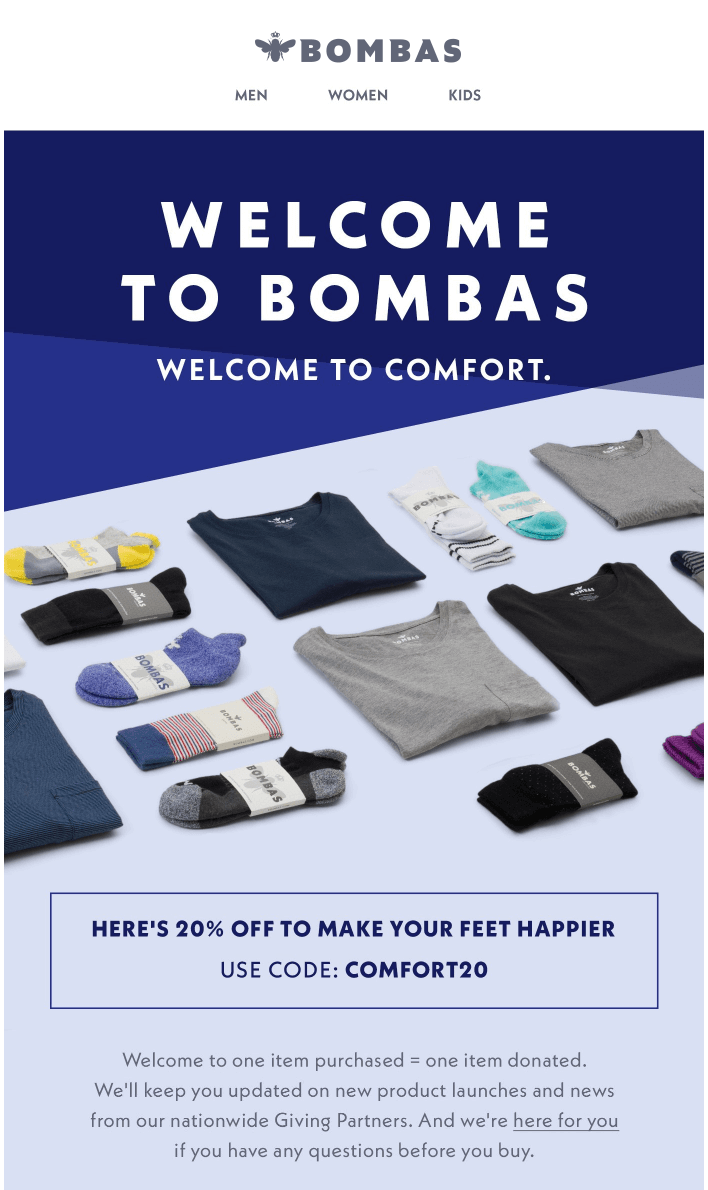
Freebies and discounts are also a good way to get people to sign up in the first place. Offering a free resource or money off in exchange for contact details can quickly boost the size of your mailing list. Just make sure to promote the offer in your opt in forms and sign up bars.
8. Set expectations
Now’s also a good time to define your relationship with subscribers. Let them know how often they’ll be hearing from you and what sort of emails you’ll be sending.
If they know what to expect from you, they won’t be surprised when they receive emails from you in the future. And this can help reduce your unsubscribe rate, as well as spam complaints.
The more trust you can build with your audience, the better engaged they will be with your content.
It’s also a good idea to make it clear that they can unsubscribe at any time. And tell them how to unsubscribe. This might seem counter-intuitive to marketers but you want engaged subscribers – quality over quantity. So make it easy for those that would rather not be on your list, get off your list.
Here’s an example of how to do it from the Arts Council England:
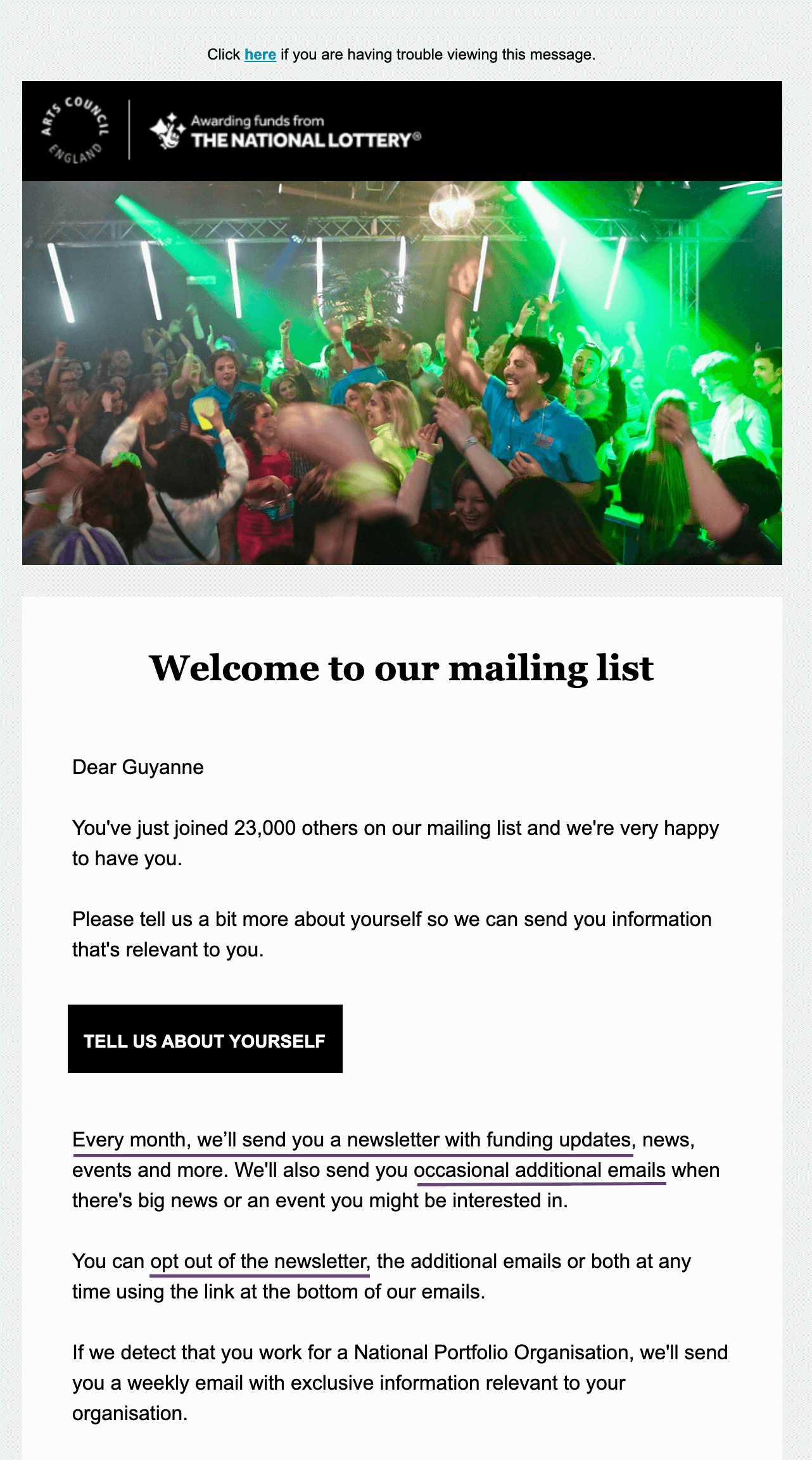
In this welcome message, the Arts Council inform subscribers that they’ll receive a monthly newsletter and the occasional email about special events. They also specifically mention how subscribers can opt out. The result is that subscribers have all the essential info they need to decide whether they want to continue this relationship – in other words, stayed subscribed or not.
9. Show your brand at its best
A successful welcome email is all about making a great first impression. So show off what makes your brand so great.
Whether it’s a popular blog post, e-book or video, include a link to your best content. Or include a few suggestions of best-selling products new subscribers might like.
It’s also a good time to explain to subscribers what sets you apart from the competition. If you want to one day convert these subscribers into paying customers, use this opportunity to highlight your unique selling propositions.
Start building a stronger brand recognition by familiarising subscribers with the reasons why they should buy from you/follow you/donate to your cause – whatever your main business goal is.
Here’s a great example of how to do this from men’s clothing retailer Charles Tyrwhitt:
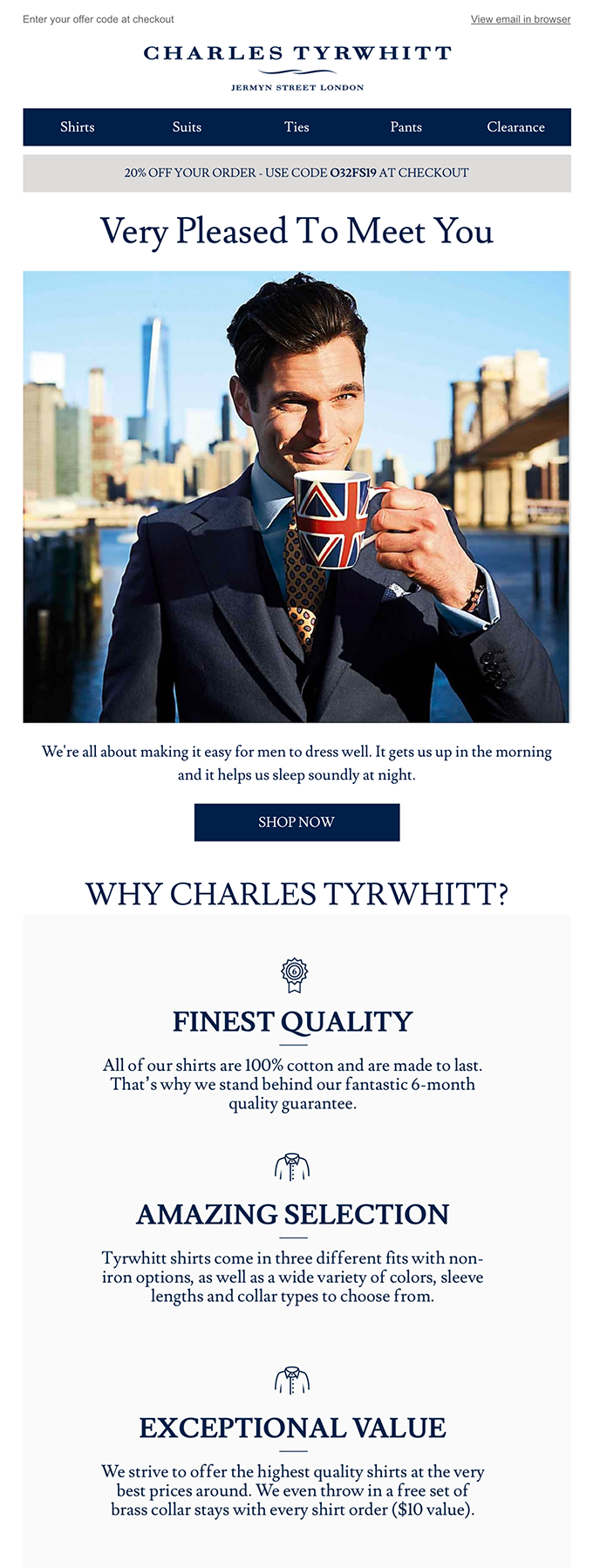
They ask the question “why Charles Tyrwhitt?”, which they then answer with three reasons. And it’s done with some clever copywriting tactics. First off, they use the rule of three – the smallest number needed to create a pattern. This makes the information more memorable.
And secondly, each of the three points has a short two-word heading with a more detailed explanation that follows. These two-word headings – a combination of adjective and noun – succinctly inform subscribers why they should buy their shirts from this brand. And do so in a way that’s easy to read, easy to remember.
10. Be clear on your goal
Finally, for your welcome email to be effective, you need to ask yourself – what do you want new subscribers to do once they’ve read this email?
And use the answer to decide what will be your main call-to-action.
Whether that’s asking readers to follow your social media channels. Or use an exclusive welcome discount on their next purchase. Or update their preferences. Now’s the time to ask.
Remember that it’s in those first 48 hours of signing up that subscribers are most engaged with your brand. So if you want them to take further action, your chances of a positive response are rarely going to be better.
Here’s how cosmetics retailer Lush does it:
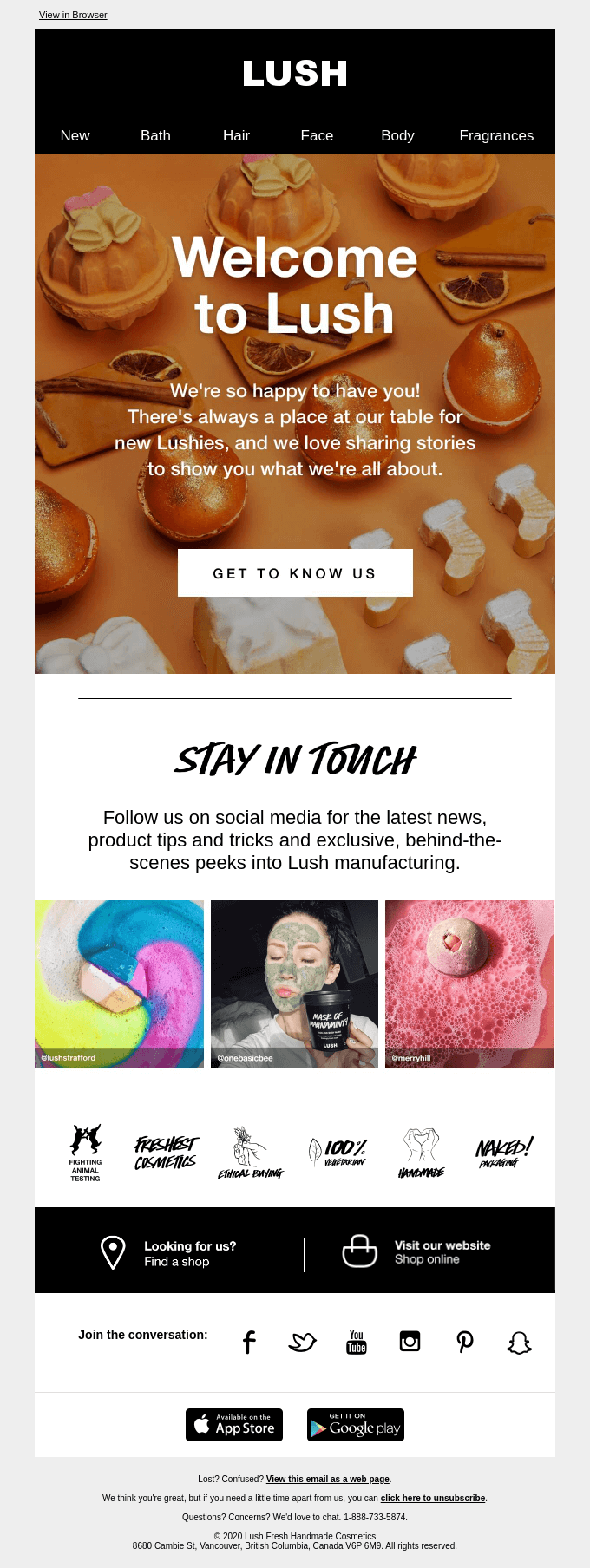
It’s clear they want new subscribers to follow them on Instagram as they include a whole section with Insta pics and a large “stay in touch” heading. They’ve also included links to more of their social media channels in the footer with a CTA of “join the conversation”.
Final thoughts
A welcome email carries a lot of responsibility. Not only does it have to deliver an amazing first impression of your brand, it also needs to move new subscribers into taking some form of action.
But if you use the tips in this article, you’re well on your way to writing a great welcome email that does all this and more.
And with EmailOctopus, a welcome email is quick and easy to set up as an automated workflow. So there’s really no excuse for not having one in place.
But a welcome email is not a “set it and forget it” type of campaign. Remember to regularly update your welcome email so that it’s relevant to what’s happening in your business, and the wider world. Times change and your welcome email should change with the times too.
And don’t be afraid to experiment. Test out different subject lines and email content to see which drives the most engagement.
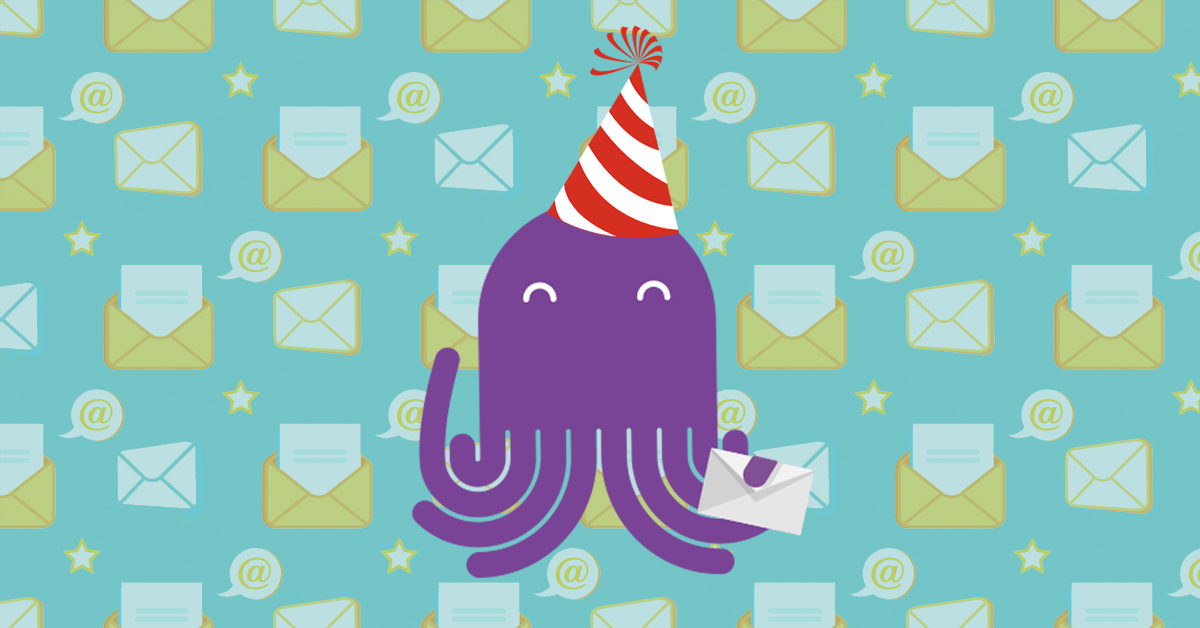
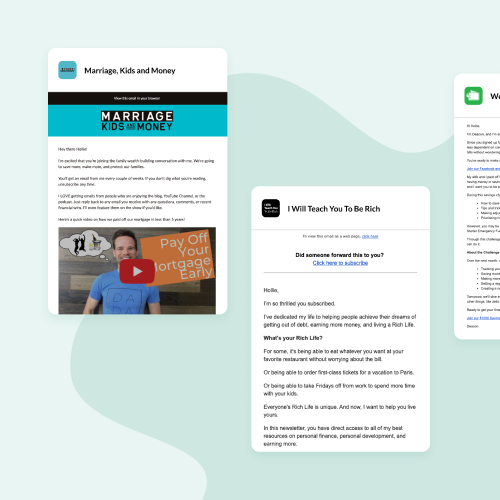
No Comments
Leave a comment Cancel